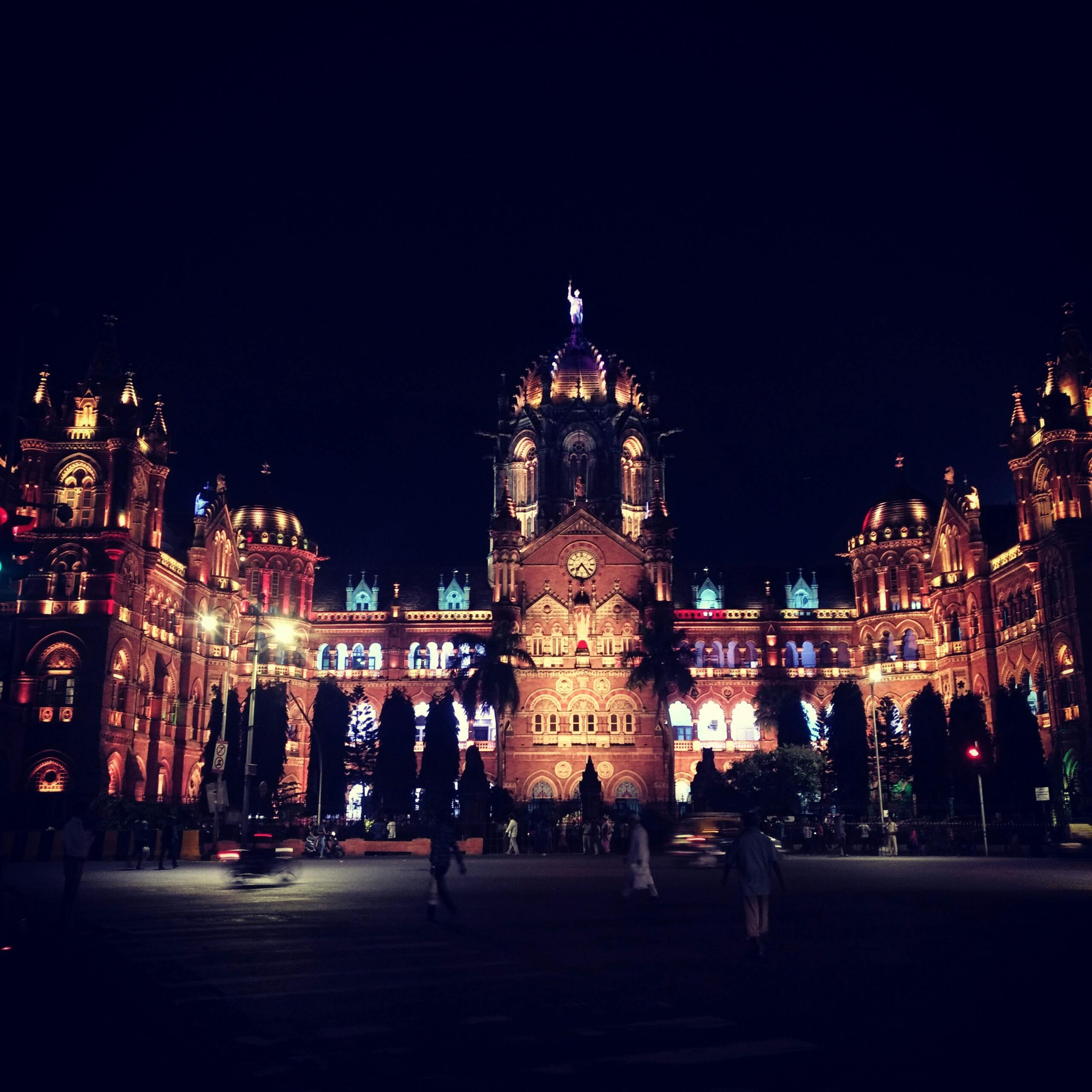Mumbai isn’t just a city—it’s a living museum of architecture where every corner tells a different story. From crumbling colonial facades to glittering glass towers, the city reveals its layered past and present through design. Walking through Mumbai is like flipping through a visual history book—one where every chapter is written in stone, steel, and imagination.
1. Colonial Majesty in Fort & Ballard Estate
Begin your journey in Fort, the historic heart of old Bombay. The Chhatrapati Shivaji Maharaj Terminus (CST), a UNESCO World Heritage site, is a stunning display of Indo-Gothic architecture—think stained glass windows, domes, turrets, and stone-carved details that could rival any European cathedral.
A few steps away, St. Thomas Cathedral (1718) whispers stories of Mumbai’s earliest British roots beneath its vaulted ceilings. Then stroll into Ballard Estate, where wide streets and Edwardian Neo-Classical buildings evoke the vibe of early 20th-century London—majestic columns, symmetry, and colonial order in the middle of bustling chaos.
2. Retro Glamour Along Marine Drive’s Art Deco Trail
Follow the curve of Marine Drive to step into the 1930s. Mumbai’s Art Deco stretch—second only to Miami in scale—is all about geometric lines, curved balconies, and jazz-age optimism. The Eros Cinema, with its vertical fins and stone cladding, is a Deco classic.
From there, walk to the Oval Maidan where the contrast is stunning: on one side, the graceful Art Deco apartments with their tropical motifs; on the other, the Gothic spires of the University of Mumbai and the High Court. This is the city’s most cinematic stretch, especially during golden hour.
3. Byculla’s Victorian Touch: The Bhau Daji Lad Museum
Head inland to Byculla for a deeper dive into Victorian-era Bombay. The Dr. Bhau Daji Lad Museum, established in 1872, is an architectural gem with its Palladian layout and iron-and-glass interiors. Restored to its former glory, it now houses detailed dioramas and decorative arts that give a glimpse into Bombay’s past.
Step outside into Rani Baug—Mumbai’s 19th-century botanical garden-cum-zoo—where colonial dreams of tropical grandeur still bloom in the rare trees and iron pavilions.
4. Bandra: From Portuguese Past to Street Art Present
Over the sea in Bandra, the architectural mood softens. This is where Mumbai’s Indo-Portuguese legacy is alive in narrow alleys, weathered bungalows, and quiet chapels. Mount Mary Basilica crowns the suburb with Baroque elegance, while the lanes of Ranwar Village offer glimpses into Bandra’s oldest quarters.
But don’t miss the modern touches—Chapel Road and Waroda Road are bursting with street art, bold murals, and indie cafes. Bandra wears its heritage lightly but proudly, with the past and present often sharing the same wall.
5. Skyline of the Future: Worli & Bandra-Kurla Complex (BKC)
To witness Mumbai’s ambitions, head to Worli and BKC. The Bandra-Worli Sea Link is a modern marvel, slicing across the sea like a steel ribbon. Nearby, the gleaming silhouettes of The World Towers and other high-rises define new-age Mumbai.
In BKC, sleek office blocks and avant-garde structures like the Jio World Centre signal a futuristic aesthetic. These spaces don’t just house businesses—they redefine the visual rhythm of the city.
Mumbai in Layers
What makes Mumbai unique is the way these worlds collide and coexist. You might find a centuries-old cross at the foot of a new skyscraper, or a historic courtroom repurposed as a boutique bookstore. This isn’t just urban development—it’s a city in dialogue with itself.
And through all of it, Mony keeps your payments effortless—whether it’s for museum tickets, street-side nimbu pani, or your favorite coffee-table book on Mumbai’s architecture. Because in a city where every step is a story, you should never have to pause the journey.

